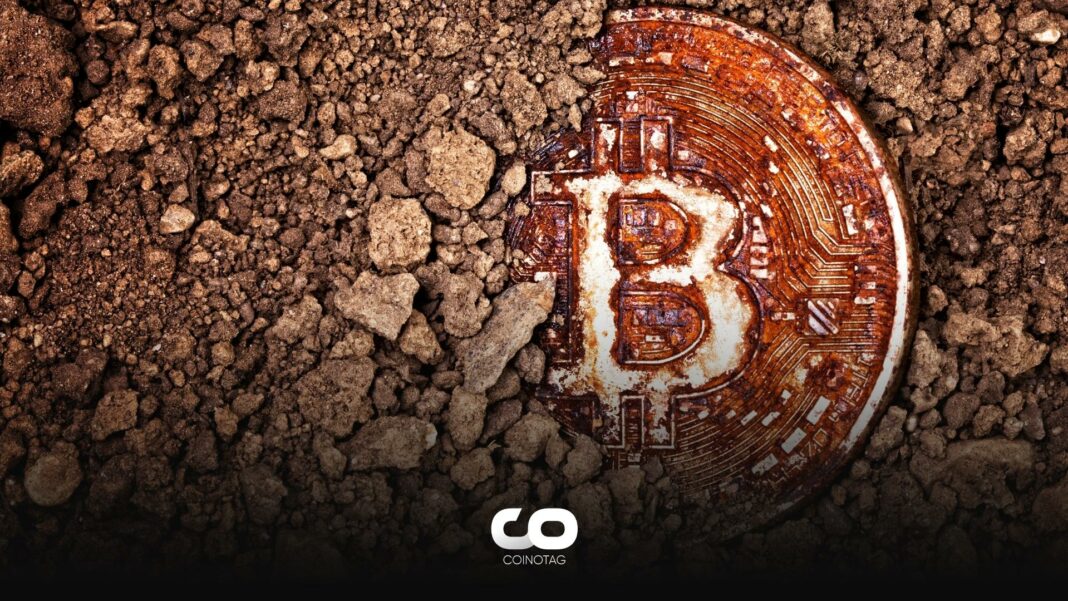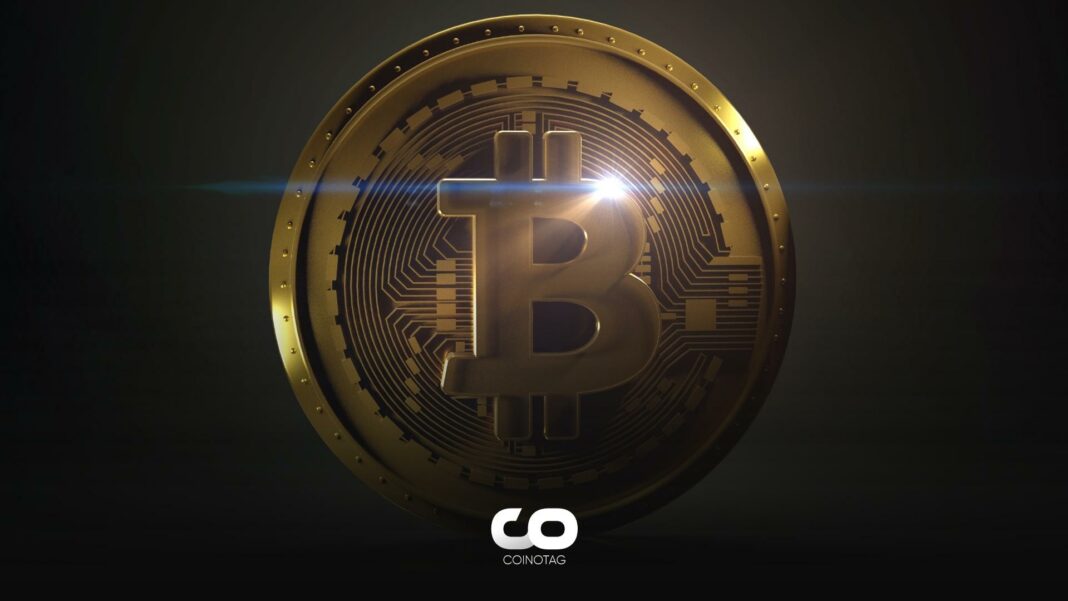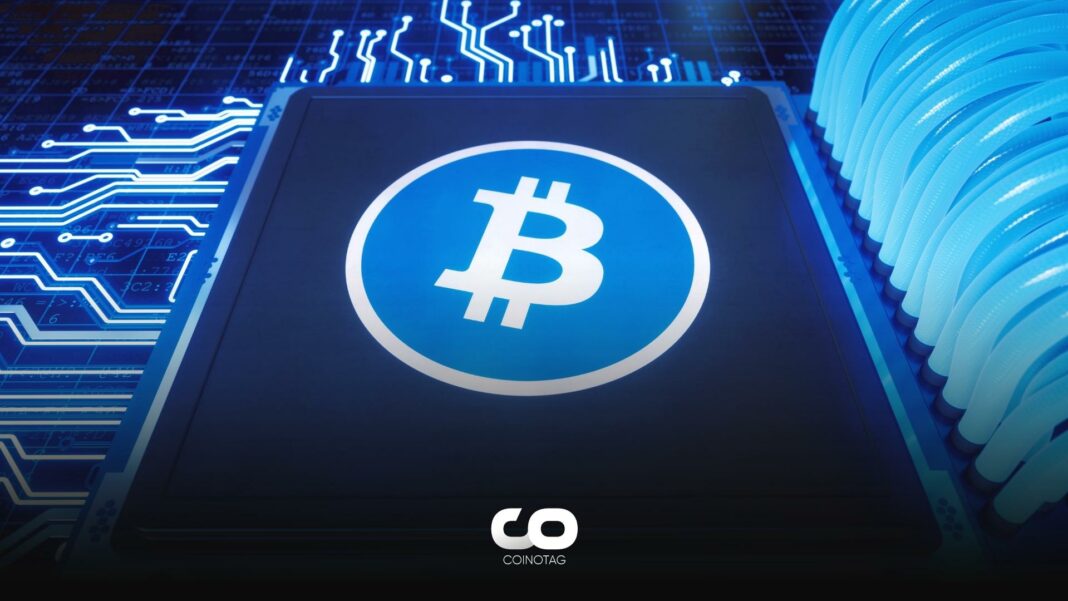| COINOTAG recommends • Exchange signup |
| 💹 Trade with pro tools |
| Fast execution, robust charts, clean risk controls. |
| 👉 Open account → |
| COINOTAG recommends • Exchange signup |
| 🚀 Smooth orders, clear control |
| Advanced order types and market depth in one view. |
| 👉 Create account → |
| COINOTAG recommends • Exchange signup |
| 📈 Clarity in volatile markets |
| Plan entries & exits, manage positions with discipline. |
| 👉 Sign up → |
| COINOTAG recommends • Exchange signup |
| ⚡ Speed, depth, reliability |
| Execute confidently when timing matters. |
| 👉 Open account → |
| COINOTAG recommends • Exchange signup |
| 🧭 A focused workflow for traders |
| Alerts, watchlists, and a repeatable process. |
| 👉 Get started → |
| COINOTAG recommends • Exchange signup |
| ✅ Data‑driven decisions |
| Focus on process—not noise. |
| 👉 Sign up → |
- As the Bitcoin Halving event approaches, if market prices remain stagnant or decline, the mining industry will face a critical challenge in just nine months.
- Bitcoin miners earned a total revenue of $783.76 million, with block rewards accounting for $745.45 million.
- The low transaction fee rate, coupled with the reduction of rewards at each halving, has various implications for the long-term sustainability of the network.
As the Bitcoin Halving event, scheduled for 2024, approaches, challenges may arise for miners; will the decrease in block rewards lead to reduced participation?
A Deep Dive into Mining Rewards

As the Bitcoin Halving event approaches, if market prices remain stagnant or decline, the mining industry will face a critical challenge in just nine months. Typically, the price of Bitcoin (BTC) experiences a significant increase approximately six to twelve months before the Halving event.
Bitcoin (BTC) experienced an increase of over 80% in 2023. Currently, around 900 new Bitcoins (144 blocks) are entering the market each day. In just nine months, if prices continue to remain in the same range, mining participants will witness a sharp decline and earn only a reduced amount of approximately $13 million daily. According to statistics, miner fees account for only a small portion of the revenue earned by Bitcoin miners.
| COINOTAG recommends • Professional traders group |
| 💎 Join a professional trading community |
| Work with senior traders, research‑backed setups, and risk‑first frameworks. |
| 👉 Join the group → |
| COINOTAG recommends • Professional traders group |
| 📊 Transparent performance, real process |
| Spot strategies with documented months of triple‑digit runs during strong trends; futures plans use defined R:R and sizing. |
| 👉 Get access → |
| COINOTAG recommends • Professional traders group |
| 🧭 Research → Plan → Execute |
| Daily levels, watchlists, and post‑trade reviews to build consistency. |
| 👉 Join now → |
| COINOTAG recommends • Professional traders group |
| 🛡️ Risk comes first |
| Sizing methods, invalidation rules, and R‑multiples baked into every plan. |
| 👉 Start today → |
| COINOTAG recommends • Professional traders group |
| 🧠 Learn the “why” behind each trade |
| Live breakdowns, playbooks, and framework‑first education. |
| 👉 Join the group → |
| COINOTAG recommends • Professional traders group |
| 🚀 Insider • APEX • INNER CIRCLE |
| Choose the depth you need—tools, coaching, and member rooms. |
| 👉 Explore tiers → |
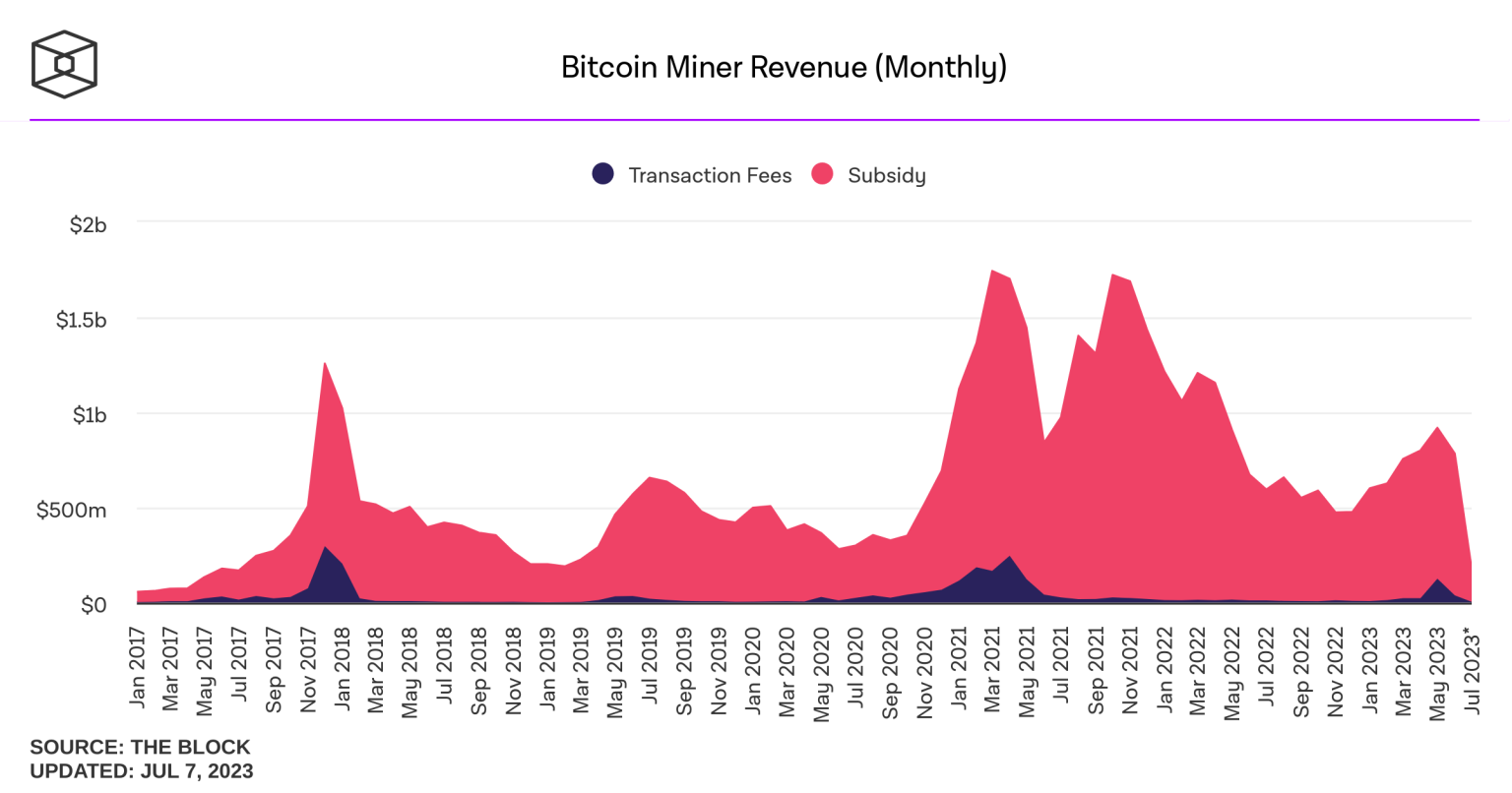
As of July 7, 2023, fees represented 1.89% of the earnings obtained from 144 blocks. In June, Bitcoin miners earned a total revenue of $783.76 million, with block rewards (excluding fees) totaling $745.45 million. In May, miners earned a total revenue of $919.22 million, with $793.3 million coming from block rewards, according to the data.
| COINOTAG recommends • Exchange signup |
| 📈 Clear interface, precise orders |
| Sharp entries & exits with actionable alerts. |
| 👉 Create free account → |
| COINOTAG recommends • Exchange signup |
| 🧠 Smarter tools. Better decisions. |
| Depth analytics and risk features in one view. |
| 👉 Sign up → |
| COINOTAG recommends • Exchange signup |
| 🎯 Take control of entries & exits |
| Set alerts, define stops, execute consistently. |
| 👉 Open account → |
| COINOTAG recommends • Exchange signup |
| 🛠️ From idea to execution |
| Turn setups into plans with practical order types. |
| 👉 Join now → |
| COINOTAG recommends • Exchange signup |
| 📋 Trade your plan |
| Watchlists and routing that support focus. |
| 👉 Get started → |
| COINOTAG recommends • Exchange signup |
| 📊 Precision without the noise |
| Data‑first workflows for active traders. |
| 👉 Sign up → |
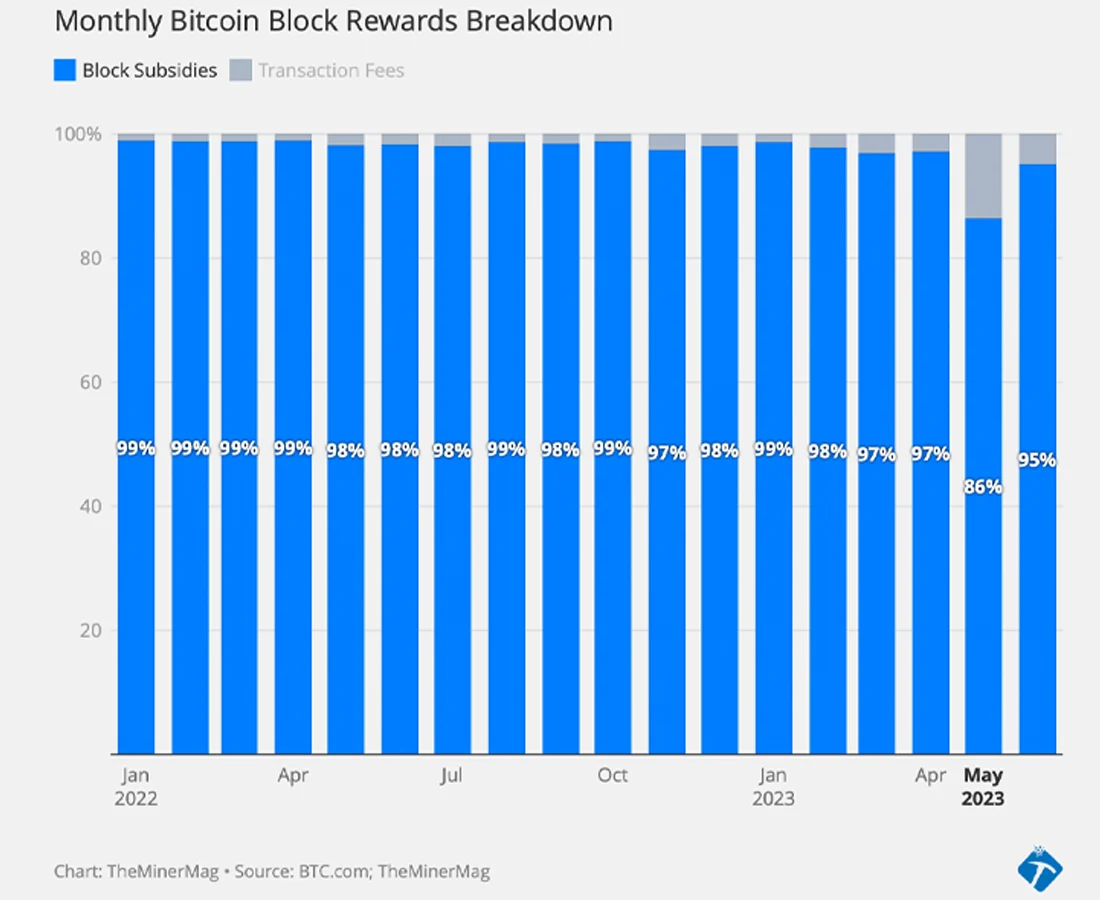
The fees collected in May, considering that fees did not exceed $20 million per month from December 2021 to March 2023, are quite substantial. While fees reached $246 million in April 2021, the increase compared to May was only $121 million. The highest monthly fee revenue recorded by miners to date was $297 million in December 2017.
| COINOTAG recommends • Traders club |
| ⚡ Futures with discipline |
| Defined R:R, pre‑set invalidation, execution checklists. |
| 👉 Join the club → |
| COINOTAG recommends • Traders club |
| 🎯 Spot strategies that compound |
| Momentum & accumulation frameworks managed with clear risk. |
| 👉 Get access → |
| COINOTAG recommends • Traders club |
| 🏛️ APEX tier for serious traders |
| Deep dives, analyst Q&A, and accountability sprints. |
| 👉 Explore APEX → |
| COINOTAG recommends • Traders club |
| 📈 Real‑time market structure |
| Key levels, liquidity zones, and actionable context. |
| 👉 Join now → |
| COINOTAG recommends • Traders club |
| 🔔 Smart alerts, not noise |
| Context‑rich notifications tied to plans and risk—never hype. |
| 👉 Get access → |
| COINOTAG recommends • Traders club |
| 🤝 Peer review & coaching |
| Hands‑on feedback that sharpens execution and risk control. |
| 👉 Join the club → |
Decrease in Block Rewards Could Reduce Miners’ Network Participation
The low transaction fee rate, coupled with the reduction of rewards at each halving, has various implications for the long-term sustainability of the network. Some advocates argue that transaction fees need to increase to mitigate potential issues. As block rewards decrease, Bitcoin miners may become less incentivized to participate in the network, especially when mining costs exceed potential rewards.
Decreased mining participation can lead to a decrease in the hash rate, making the network more vulnerable to potential attacks like a 51% attack. Larger mining operations may be the only entities capable of sustaining mining activities, potentially resulting in power concentration in a few hands. To compensate for the lack of hash power due to smaller miners exiting the market, there are two potential solutions: either the price of Bitcoin needs to significantly increase or the mining difficulty needs to decrease proportionally.
The 2024 halving will test more theories than any previous halving. This time, the reward will drop from 6.25 BTC to 3.125 BTC after the halving. After the halving, the annual inflation in the Bitcoin network will decrease from the current 1.7% to 0.84%. If the hash rate decreases due to the halving, block intervals are likely to average around 10 minutes when the network difficulty is adjusted to a lower hash rate.
Whether it’s the 2024 halving or the next one, there is a limited supply of 21 million Bitcoins, so an increase in the low fee rate may be necessary to compensate miners. Striking a balance between reducing block rewards and providing sufficient incentives to miners is crucial for the Bitcoin network to address these concerns. This balance may involve factors such as transaction fees, network scalability, and overall adoption, and it is essential for the long-term sustainability and security of the network.
| COINOTAG recommends • Exchange signup |
| 📈 Clear control for futures |
| Sizing, stops, and scenario planning tools. |
| 👉 Open futures account → |
| COINOTAG recommends • Exchange signup |
| 🧩 Structure your futures trades |
| Define entries & exits with advanced orders. |
| 👉 Sign up → |
| COINOTAG recommends • Exchange signup |
| 🛡️ Control volatility |
| Automate alerts and manage positions with discipline. |
| 👉 Get started → |
| COINOTAG recommends • Exchange signup |
| ⚙️ Execution you can rely on |
| Fast routing and meaningful depth insights. |
| 👉 Create account → |
| COINOTAG recommends • Exchange signup |
| 📒 Plan. Execute. Review. |
| Frameworks for consistent decision‑making. |
| 👉 Join now → |
| COINOTAG recommends • Exchange signup |
| 🧩 Choose clarity over complexity |
| Actionable, pro‑grade tools—no fluff. |
| 👉 Open account → |
| COINOTAG recommends • Members‑only research |
| 📌 Curated setups, clearly explained |
| Entry, invalidation, targets, and R:R defined before execution. |
| 👉 Get access → |
| COINOTAG recommends • Members‑only research |
| 🧠 Data‑led decision making |
| Technical + flow + context synthesized into actionable plans. |
| 👉 Join now → |
| COINOTAG recommends • Members‑only research |
| 🧱 Consistency over hype |
| Repeatable rules, realistic expectations, and a calmer mindset. |
| 👉 Get access → |
| COINOTAG recommends • Members‑only research |
| 🕒 Patience is an edge |
| Wait for confirmation and manage risk with checklists. |
| 👉 Join now → |
| COINOTAG recommends • Members‑only research |
| 💼 Professional mentorship |
| Guidance from seasoned traders and structured feedback loops. |
| 👉 Get access → |
| COINOTAG recommends • Members‑only research |
| 🧮 Track • Review • Improve |
| Documented PnL tracking and post‑mortems to accelerate learning. |
| 👉 Join now → |


